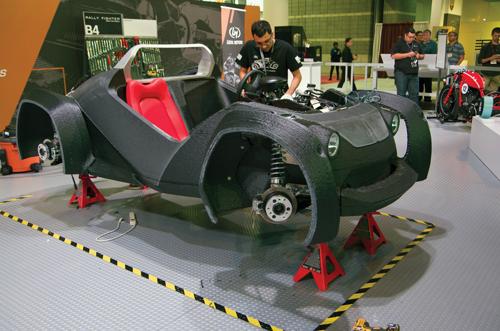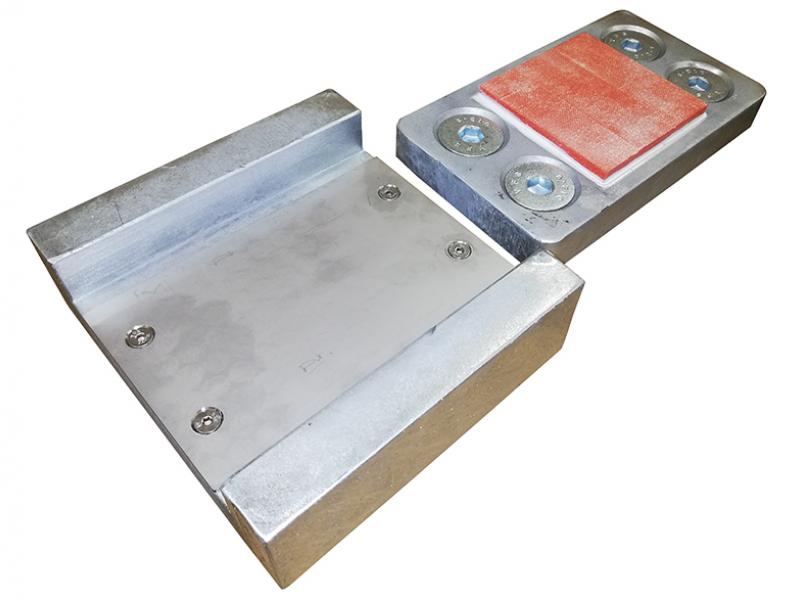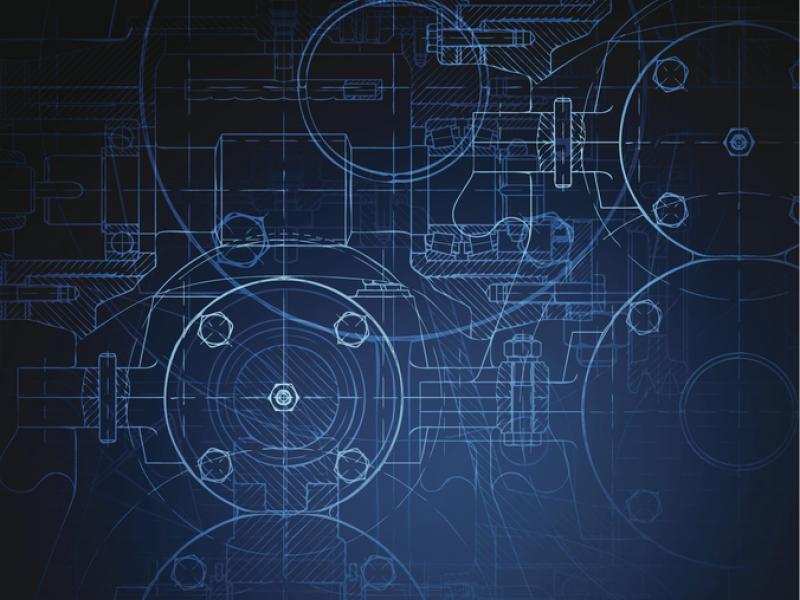History was made when the world’s first 3D-printed car drove out of McCormick Place in Chicago.
During the six-day International Manufacturing Technology Show, the vehicle was printed over 44 hours then assembled by a team led by Local Motors with the historic first drive set taking place the morning of Saturday, 13 September.
Called the Strati, the vehicle was printed in one piece using direct digital manufacturing, (DDM), which is the first time this method has been used to make a car.
Mechanical components, such as battery, motor, wiring, and suspension are sourced from a variety of suppliers, including Renault’s Twizy, a line of electric powered city cars.
John B. Rogers, Jr, CEO of Local Motors, says: “This brand-new process disrupts the manufacturing status quo, changes the consumer experience and proves that a car can be born in an entirely different way.”
The vehicle uses the material science and advanced manufacturing techniques pioneered at the US Department of Energy’s (DOE) Manufacturing Demonstration Facility at Oak Ridge National Laboratory (ORNL).
“This project represents the unique opportunity DOE’s National Laboratory System offers to the industry, to collaborate in an open environment to deliver fast, innovative, manufacturing solutions,” says Craig Blue, director, Advanced Manufacturing Program and Manufacturing Demonstration Facility at ORNL.
“These partnerships are pushing the envelope on emerging technologies.”
Andrew Jamison CEO of Cincinnati Incorporated, says: “The deposition rate of 40 pounds per hour of carbon reinforced ABS plastic and the large size mean that large parts, like a car, can be produced using additive technology.”
The vehicle proves the viability of using sustainable, digital manufacturing solutions in the automotive industry. Local Motors plans to launch production-level 3D-printed vehicles that will be available to the public.






